
Advanced Power Manager ICs & System Solutions for Servers, NAS, Automotive, and Industrial Applications
Global electronic component supplier ERSAELECTRONICS: Rich inventory for one-stop shopping. Inquire easily, and receive fast, customized solutions and quotes.
Unify software power policies with hardware enforcement. Multi-rail sequencing, telemetry, and protection via PMICs, power sequencers, and PMBus control.
- Cross-brand IC matching and pin/package fit
- PMBus/I²C telemetry, fault logging, margining
- AEC-Q100, ISO 26262 path, IEC 62368 readiness

Background & Trends — From APM to Digital Power Managers
The term “advanced power manager” traces back to PC-era software policies and has evolved into a hardware-enforced, measurable discipline. Today, PMICs, power sequencers, and PMBus control bridge software policies with multi-rail power delivery across servers, NAS, automotive ECUs, and industrial PLCs.
PC-Era Origins — APM to ACPI
In 1992, Advanced Power Management (APM) defined early OS/BIOS cooperation for saving power on PCs. It was later superseded by ACPI, which exposed richer, programmable power states. These frameworks set the idea of “top-level power policies,” but enforcement still relied on underlying hardware.
Digital Power Arrives — PMBus & Power System Managers
PMBus (built on SMBus/I²C) introduced a common command set for telemetry, fault logging, and voltage margining. On complex boards, power system managers and rail sequencers coordinate bring-up, ordering, and protections across many rails, while PMICs integrate efficient conversion and local safeguards.
- Unified commands and data: voltage/current readback, status, black-box fault records
- Deterministic sequencing: UV/OV thresholds, retry policies, programmable delays
- Remote adjustment: margining and trim for validation and yield tuning
Brand Features Mapped to Hardware
Product UIs such as HPE Advanced Power Manager, Synology DSM power settings, or Dell’s power tools expose policies like scheduling, capping, and hibernation. Underneath, these policies are realized by VRMs, PMICs, and managers speaking PMBus to power supplies and board-level rails.
Why Now — Demand Spike
- Datacenter & AI servers: rising rack densities and efficiency targets drive measurable, adjustable power.
- Automotive ECUs: domain controllers need multi-rail sequencing, redundancy, and safety (AEC-Q100, ISO 26262 paths).
- Industrial & energy: PLC and AMI systems benefit from remote diagnostics, event logs, and predictive maintenance.
What’s Next — Forward Trends
- Finer telemetry beyond V/I into health, drift, and lifetime indicators
- Edge autonomy: local recovery and self-healing with managers + MCUs
- Earlier compliance integration: EMC/ESD and functional safety in pre-design reviews
- Subsystem power domainization: e.g., DDR5 PMICs shifting control closer to the load


References (authoritative sources):
Application Scenarios — Servers, NAS, Industrial, Automotive
From rack-scale servers to NAS, PLC/AMI, and automotive domain controllers, advanced power managers connect software policies with hardware enforcement via PMICs, rail sequencers, and PMBus control.
Server & Rack Infrastructure
Case (HPE-style PMBus power): rack PSUs and VRMs are supervised over PMBus; a board-level manager coordinates N+1 redundancy, hot-swap inrush control, and deterministic multi-rail sequencing.
- Requirements: redundancy (N+1), hot-swap/ideal diode, remote telemetry & capping
- Sequencing & brownout handling for CPU, DDR, SSD, BMC rails
- PMBus aggregation:
READ_VOUT/READ_IOUT/STATUS_WORD, fault logs

NAS & Storage Systems
Synology DSM power policies translate to hardware gating for HDD/SSD, controller, NIC, and fans. Low-power wake (RTC/WoL/GPIO) and multi-rail monitoring keep noise and energy in check.
- Spin-up surge control and soft-start for HDD/SSD groups
- Load switches / ideal diode for selective power domains
- Fan PWM vs. acoustic profile; standby current and wake latency

Industrial Control & Energy
PLC racks and AMI/RTU sites require redundant inputs, surge immunity, and remote diagnostics. Managed multi-rail delivery ensures deterministic bring-up for controllers, comms, and sensors.
- Dual-input OR-ing with hot-swap and ideal-diode control
- Surge/ESD/EMI robustness per IEC 61000-x
- Predictive maintenance with telemetry and event logs

Automotive Applications
Domain controllers and ADAS ECUs require AEC-Q100 PMICs with coordinated sequencing, watchdogs, diagnostics, and safe states. Failsafe paths and brownout handling are essential for VBAT transients.
- Multi-rail SoC/MCU/DDR/SerDes power with dependency graphs
- Diagnostics: OV/UV/SCP, watchdogs, error injection hooks
- EMC thermal constraints and cold-crank ride-through

Technical Depth — IC Types, Operation, and Control Loops
Complex boards rarely run on a single rail. Advanced power managers coordinate conversion, sequencing, protection, and telemetry across many rails. In practice, three building blocks work together: multi-output PMICs for efficient conversion, power sequencers/managers for orchestration, and PMBus/I²C telemetry for measurement and remote control.
IC Types & Positioning
1) Multi-Output PMIC
- Role: high-efficiency DCDC/LDO conversion, local protections (UV/OV/OCP/OTP), PG/EN/RESET hooks.
- Prefer when: 3–8 rails, tight area/efficiency, SoC/MCU boards with known dependencies.
- Notes: dedicate sensitive loads (DDR/SerDes) to well-routed rails; use Kelvin sense; align PG timing with external sequencer if present.
2) Power Sequencer / System Manager
- Role: multi-rail bring-up/bring-down ordering, dependency graphs, fault handling, event logs, scripted state machines.
- Prefer when: ≥8 rails, cross-board coordination, need “black-box” fault records and remote recovery.
- Key params:
TON_DELAY/TON_RISE/TOFF_DELAY/TOFF_FALL, retries, isolation actions.
3) PMBus/I²C Telemetry Modules
- Role: common command set for readback (V/I/T/status), thresholding, remote margin/trim.
- Typical reads:
READ_VOUT,READ_IOUT,READ_TEMPERATURE_x,STATUS_WORD. - Typical writes:
VOUT_COMMAND,VOUT_MARGIN_HIGH/LOW,OPERATION, timing (TON_*). - Engineering tip: sampling cadence and averaging must match fault-detection windows, or you will “see” events too late.
| Type | Positioning | Prefer When | Strengths | Trade-offs | Interfaces |
|---|---|---|---|---|---|
| Multi-output PMIC | Efficient conversion + local protection | 3–8 rails, compact boards | Integration, efficiency, size | Limited cross-board orchestration | GPIO, I²C/SPI (sometimes) |
| Sequencer/Manager | Rail ordering + fault policy + logs | ≥8 rails, cross-module control | Observability, determinism | Extra BOM, configuration effort | PMBus/I²C, GPIO |
| Telemetry module | Measurements + remote control | Need auditability & control loops | Unified commands, scaling to BMC | Bandwidth/latency constraints | PMBus/I²C (+ vendor MFR_*) |
Operation Principles
A. Rail Sequencing
Power-up/down curves and inter-rail dependencies define a deterministic path for CPUs, DDR, SerDes, and peripherals. Managers enforce ordered TON_*/TOFF_* ramps and PG propagation across rails.
- Configurable:
TON_DELAY,TON_RISE,POWER_GOOD_ON/OFF, retries, dependencies - Corner testing: cold start, warm restart, brownout, voltage/temperature extremes

Separate “electrical dependencies” from “functional dependencies”; align PG thresholds/levels across vendors; verify reset chains with min/max TON/TOFF and worst-case thermal.
B. Fault Protection Logic (OVP/UVP/SCP/OTP)
Protection combines thresholds, hysteresis, short-circuit limits, and thermal cut-offs. Events flow to policies: limit/cut, isolate/retry, log, and report through PMBus status words.
- Status:
STATUS_WORD,STATUS_VOUT,STATUS_IOUT, vendorMFR_*fields - Actions: current limit → cutoff → isolation/retry → latch-off (policy-dependent)

Align SOA with real inductor/cap ESR and thermal paths; validate fast transients on hardware; ensure status latching and time stamps are readable after reset.
C. Remote Margining & Power Capping
Remote margining and capping tie OS/BMC policies to hardware rails via PMBus. Commands like VOUT_MARGIN_HIGH/LOW, VOUT_TRIM, and OPERATION close the loop with telemetry, enabling validation and fleet-level tuning.
- Loop: policy → PMBus commands → rail response → telemetry feedback → adjustment
- Stability: step size vs. compensation bandwidth; ripple/thermal verification under capped loads

Start with small margin steps and observe phase margin; confirm stability under worst-case load steps and temperature; coordinate capping with thermal/fan curves to avoid oscillations.
References (authoritative sources):
- PMBus Specification (SMIF) — command set, status words, and timing fields.
- Vendor application notes/datasheets: TI UCD90xx sequencers and PMICs; Renesas digital power managers; NXP/ST/onsemi/Microchip rail monitors, hot-swap, and ideal-diode controllers.
Vendor Matrix — Typical Parts & Use-Case Fit
Cross-brand quick reference for advanced power managers. Fields include model, outputs/rails, voltage range, interface, automotive grade, and package. Specifications depend on the exact device option; always verify with the official datasheet before design freeze.
A) Multi-Output PMICs
| Brand | Model | Outputs (per datasheet) | Vout Range (per datasheet) | Interface | Auto Grade | Package |
|---|---|---|---|---|---|---|
| TI | TPS6594-Q1, LP8764-Q1 | Multi-rail (SoC PMIC) | Per option (buck/LDO ranges) | I²C/PMBus (variant-dependent) | AEC-Q100 (-Q1) | QFN/BGA (per datasheet) |
| ST | L5965 / L5963, STPMIC1 | Multi-rail (per datasheet) | Buck/LDO ranges per variant | I²C (where applicable) | Automotive options (per device) | QFN/BGA (per datasheet) |
| NXP | VR5510, PF8100 | Multi-rail (i.MX/ECU PMIC) | Per option (buck/LDO ranges) | I²C/PMBus (variant-dependent) | AEC-Q100 (VR5510) | HVQFN/BGA (per datasheet) |
| Renesas | RAA271082 | Multi-rail (Automotive PMIC) | Per option (buck/LDO ranges) | I²C/PMBus (device-dependent) | AEC-Q100 (per device) | QFN/BGA (per datasheet) |
| onsemi | — (use discrete DC/DC + manager) | — | — | — | — | |
| Microchip | MCP16502 | Multi-rail (per datasheet) | Per option (buck/LDO ranges) | I²C (where applicable) | Industrial/Embedded focus | QFN (per datasheet) |
| Melexis | — (sensors focus) | — | — | — | — |
B) Power Sequencers / System Managers
| Brand | Model | Rails/Channels (per datasheet) | Voltage Supervision (per datasheet) | Interface | Auto Grade | Package |
|---|---|---|---|---|---|---|
| TI | UCD9090A, UCD90160A | ~10 / ~16 rails (family-dependent) | UV/OV thresholds, PG timing (configurable) | PMBus/I²C + GPIO | Industrial/Server focus | QFN/TQFP (per datasheet) |
| Renesas | Digital power managers / sequencers (e.g., ISL7x321 family) | Per device (multi-rail) | Voltage/PG/fault logging (per datasheet) | PMBus/I²C + GPIO | Industrial/Server/Space options | QFN/QFP (per datasheet) |
| Microchip | Supervisors/Monitors + MCU (solution path) | Configurable (solution-dependent) | Voltage/PG via monitors | I²C/SPI + GPIO | Industrial/NAS focus | Varies |
| onsemi | Hot-swap / ideal-diode controllers (with managers) | — (paired solution) | Input protection / OR-ing / inrush control | I²C/GPIO (device-dependent) | Automotive/Industrial options | SOIC/QFN (per datasheet) |
| ST / NXP | Monitors + MCU / Monitors + MCU | Solution-dependent | Voltage/PG with logs (if implemented) | I²C/SPI + GPIO | Automotive/Industrial options | Varies |
| Melexis | — (sensors focus) | — | — | — | — |
C) PMBus/I²C Telemetry (Monitors / Meters)
| Brand | Model | Measured Params | Key Commands / Interface | Auto Grade | Package |
|---|---|---|---|---|---|
| TI | INA226 (I²C power monitor), UCD90xx (with PMBus telemetry) | V/I/P, status (per device) | I²C/PMBus; READ_VOUT/IOUT, STATUS_WORD (where supported) | Industrial/Automotive options (device-dependent) | MSOP/QFN (per datasheet) |
| Renesas | ISL28022 (I²C power monitor) | V/I/P, alarms (per datasheet) | I²C; status/alert pins (per device) | Industrial focus (device-dependent) | MSOP/QFN (per datasheet) |
| Microchip | PAC1934 (I²C power monitor) | Multi-channel V/I/P (per datasheet) | I²C; accumulation/averaging registers | Industrial/Embedded focus | QFN (per datasheet) |
| ST / NXP / onsemi | Power/temperature monitors (families) / Current/voltage monitors / CSAs/meters | V/I/T (family-dependent) | I²C/SPI; alert/status pins (per device) | Automotive/Industrial options | Varies |
| Melexis | — (sensors focus) | — | — | — | — |
Use-Case Fit Summary
Automotive (domain/ADAS ECUs): prioritize automotive PMICs with safety hooks (e.g., TI TPS6594-Q1/LP8764-Q1; NXP VR5510/PF8xxx; ST L596x; Renesas RAA2710xx). Use PMBus/I²C mainly for calibration and controlled policy dispatch under ISO 26262. Validate cold-crank and voltage dip behavior.
Servers & Industrial: favor a sequencer/manager + discrete PMIC/VRM approach (e.g., TI UCD90xx families) with PMBus telemetry for STATUS_WORD, fault logs, and remote margining. Pair with hot-swap/ideal-diode controllers (onsemi/TI/ST) for redundancy and inrush control. Verify PG propagation and log readability after resets.
NAS & Embedded: choose medium-rail PMICs with light monitoring/switching (e.g., Microchip MCP16502, STPMIC1, NXP PF8100) to enable low-power wake and domain gating. Pay attention to HDD/SSD spin-up surge, fan PWM vs acoustics, and standby current vs wake latency trade-offs.
Data source: Official datasheets & application notes from TI, ST, NXP, Renesas, onsemi, Microchip, Melexis. Model names link to brand portals. Exact outputs, voltage ranges, interfaces, automotive grades, and packages vary by device option and revision — always confirm with the latest datasheet. Last reviewed: 2025-08-15
System Integration Examples — Block Diagrams, Sequencing & PMBus Flows
Each scenario follows the same spine: input protection → conversion → manager/sequencer → multi-rail loads → telemetry & policy. Diagrams are text-free for clarity; captions summarize key behaviors and command flows.
Server & Rack
PMBus PSUs feed a backplane bus; a board-level manager sequences CPU/DDR/SSD rails and aggregates telemetry to the BMC. Redundancy (N+1), hot-swap, and ideal-diode OR-ing are enforced at the input stage.


TON_DELAY, TON_RISE, PG chains; brownout & warm-restart verified.
VOUT_COMMAND/TON_* → sample READ_* → on fault read STATUS_* → policy → CLEAR_FAULTS.NAS & Storage
A compact PMIC with load switches gates HDD/SSD groups, controller, NIC, and fans. Low-power wake (RTC/WoL/GPIO) restores domains with staggered spin-up to limit inrush and noise.



READ_* telemetry → acoustic/thermal coordination.Industrial Control & Energy
Dual inputs with OR-ing and surge protection feed isolated and non-isolated rails. A sequencer/monitor coordinates PLC CPU, comms, I/O, and sensors; remote sites log events for predictive maintenance.



READ_* + event logs for remote sites.Automotive
VBAT feeds an automotive PMIC and manager with watchdogs and safety diagnostics. Fail-safe/operational paths maintain essential domains; sequencing aligns with ASIL goals and safety states.



READ_* & status → degrade/safe state on fault.- Grades: 0/1/2/3 by temperature range
- Core items: ESD (HBM/CDM), latch-up, HTOL, temp cycling, THB/HAST, solderability, mechanical shock/vibration
- Board-level: ISO 7637-2 transients, cold-crank/dip, load dump, EMC pre-compliance
Common PMBus Command Flow

- Commissioning: device discovery,
PAGE,VOUT_COMMAND,TON_*, vendorMFR_*to NVM - Runtime: periodic
READ_VOUT,READ_IOUT,READ_TEMPERATURE_x,STATUS_WORD - Fault:
ALERT#→ readSTATUS_*→ policy (retry/latch-off) →CLEAR_FAULTS& log - Validation: brownout, cold/warm start, thermal corners, EMC disturbances
IC Selection Guide & Cross-Reference
A practical funnel from scenario → requirements → recommended parts, with cross-reference methods and risk controls. All specifications must be verified against the official datasheet before design freeze.
Servers & Racks
- Needs: ≥8 rails, PMBus telemetry & logs, N+1, hot-swap/ideal-diode
- Recommend: TI UCD90xx sequencers; Renesas digital power managers; onsemi/TI/ST hot-swap & OR-ing
- Alt path: Medium-rail PMIC + light monitors (reduced black-box features)
NAS & Storage
- Needs: inrush/staggered spin-up, low-power wake (RTC/WoL), fan acoustics
- Recommend: ST STPMIC1, NXP PF8100, Microchip MCP16502 + load switches/ideal-diode
- Alt path: add a small sequencer/monitor for clearer dependencies & alerts
Industrial Control & Energy
- Needs: 24V bus, surge/ESD/EMI, redundant OR-ing, remote diagnostics
- Recommend: TI/Renesas/ST/Microchip PMIC + sequencer/monitor; onsemi/TI/ST hot-swap/OR-ing
- Alt path: I²C metering + MCU uplink if PMBus is not present
Automotive
- Needs: AEC-Q100, ISO 26262, cold-crank/dip, watchdog & diagnostics
- Recommend: TI TPS6594-Q1 / LP8764-Q1; NXP VR5510/FS8x; ST L596x; Renesas RAA2710xx
- Alt path: lower ASIL targets may simplify monitoring/logging
Requirements Checklist (attach with your BOM)
- Input voltage & range; total rails and per-rail current/ripple
- Sequencing order (power-up/down), PG dependencies
- Telemetry/control: PMBus/I²C, logs, margining/power capping
- Environment: temperature, EMC/ESD targets, safety grade
- Package/layout: package type, pin compatibility, area/height
- Lifecycle: in-production/NRND/EOL, lead time, second source
Cross-Reference (Xref) — Method & Table
- Package & pinout alignment (footprint, thermal pad, pin functions)
- Electrical margins ≥ target (VIN/VOUT/I, thermal, derating)
- Control interface parity (PMBus/I²C/SPI; PAGE/MFR_* compatibility)
- Sequencing/protection behavior (TON/TOFF/PG, OVP/UVP/SCP/OTP)
- Telemetry resolution & sampling windows vs. fault timing
- Environment & compliance (temp grade, AEC-Q100, EMC pre-checks)
- Lifecycle & supply (PCN/EOL, lead time, second source)
| Target PN | Primary Recommendation | Alt #1 | Alt #2 | Interface | Auto Grade | Package | Notes |
|---|---|---|---|---|---|---|---|
| PMIC for NAS | ST STPMIC1 | NXP PF8100 | Microchip MCP16502 | I²C (PMBus optional) | — | QFN/BGA (per DS) | Check HDD inrush; fan PWM pins; wake latency. |
| Sequencer for Server | TI UCD9090A | TI UCD90160A | Renesas digital power manager | PMBus/I²C | — | QFN/TQFP | Verify PG chain; log readability after resets. |
| Automotive PMIC (ADAS) | TI TPS6594 | NXP VR5510 | Renesas RAA271082 | I²C/PMBus (device-dep.) | AEC-Q100 | QFN/BGA (per DS) | Cold-crank/dip; watchdog & safety hooks mapping. |
Replacement Risks
- EOL/NRND near-term; late lifecycle adoption
- Lead time/allocations; missing second source
- Package/pin incompatibility; thermal pad mismatch
- Compensation/stability shifts; transient behavior changes
- PMBus MFR_* differences; telemetry scaling
Mitigations
- Choose electrical “superset” parts where possible
- Lab matrix: cold/warm start, load steps, brownout, SCP/ILIM, EMI
- Firmware map: commands/status/alerts one-to-one check
- Layout: pad options or 0-Ω jumpers for alternates
BOM Submission → Prototype → Pilot → Mass Production

- Deliverables: power tree, PMBus command sheet, sequencing script, test report, alternates list
- Checklist: validation matrix (thermal/EMI/transients), Xref notes, firmware map
Verify IC Authenticity
- Photography: top/bottom/angled with raking light; font, die mark, lot/date codes
- Lot code: match brand format/PCN; decode 2D/1D barcodes
- Package: ink alignment, color tone, coplanarity, chamfer/notch consistency
- Packing: MSL bag label, desiccant/card, reel labels, origin/fab codes
- Quick E-tests: thresholds/bias/no-load current; escalate to lab (X-ray/decap/curve trace) if needed
- Channels: prefer brand/authorized distribution; keep CoC/traceability; tighten incoming AQL for spot buys

Data source: Official datasheets & application notes from TI, ST, NXP, Renesas, onsemi, Microchip, Melexis. Model capabilities (rails, voltage ranges, interfaces, grades, packages) vary by option and revision — always confirm with the latest datasheet. Last reviewed: 2025-08-15
Downloadable Resources (PDF)
Engineer-ready PDFs with versioning, release dates, and authorship. Print-friendly, grayscale-safe, and aligned with the selection/playbooks above. Each file includes a change log and “Prepared by Ersa Electronics”.
Advanced Power Manager IC Selection Chart
Cross-brand matrix (TI, ST, NXP, Renesas, onsemi, Microchip, Melexis) linking scenarios → requirements → recommended series & alternates. Fields: interface, rails/outputs, voltage/current (per datasheet), auto grade, package, Xref notes.

- Doc No.:
EE-APM-SEL-CHARTVersion: v1.0 Release: 2025-08-15 - Prepared by: Ersa Electronics Pages: 2–3
- Use cases: HW/Power/System/BMC engineers
Server/NAS Power Sequencer Block Diagram
One-page block diagram for rack/NAS power trees: PMBus PSUs, hot-swap/OR-ing, sequencer/manager, VR rails (CPU/DDR/IO/Storage), plus a sample sequencing waveform and checklist.

- Doc No.:
EE-APM-SVR-NAS-BLOCKVersion: v1.0 Release: 2025-08-15 - Prepared by: Ersa Electronics Pages: 1–2
- Extras: TON/PG timing cues, inrush & SOA notes
PMBus Command Cheat Sheet
Fast lookup of commissioning and runtime commands: voltage programming, timing (TON_*/TOFF_*), telemetry (READ_* ), status/alerts, margining (VOUT_MARGIN_*) and common pitfalls (PAGE, Linear11).

- Doc No.:
EE-APM-PMBUS-CHEATSHEETVersion: v1.0 Release: 2025-08-15 - Prepared by: Ersa Electronics Pages: 2
- Includes: commissioning sequence & runtime polling template
Style: A4 portrait, engineering doc layout (header with Doc No./Version/Date; footer with “Prepared by Ersa Electronics”). Accessible contrast, grayscale-friendly, embedded bookmarks and ALT notes.
Data source: Official datasheets & application notes. Specifications vary by device option; verify before design freeze. Last reviewed: 2025-08-15
Frequently Asked Questions — Advanced Power Manager ICs
Concise, engineer-focused answers aligned with common search intents. Each includes practical parameters or test details. For deep dives, see Technical Depth, Applications, Selection & Xref, and Downloads.
What is an advanced power manager IC?
An advanced power manager (APM) IC supervises and orchestrates multiple power rails: it sequences power-up/down, enforces protections, logs faults, and exposes telemetry/control (often via PMBus/I²C). It typically sits above PMIC/VRMs to coordinate 8–16+ rails across a board or backplane.
TON_DELAY 2–20 ms, TON_RISE 0.5–5 ms per rail; stores ≥32 fault events; PG daisy-chains validated at min/max VIN and temperature. See Technical Depth →What is the difference between an advanced power manager and a PMIC?
A PMIC converts power (buck/boost/LDO) and provides local protections; an APM IC coordinates many rails and policies across devices. In complex systems they work together: PMICs generate rails, while the APM sequences dependencies, margins voltage, and aggregates telemetry.
POWER_GOOD_ON/OFF vs. PMIC thresholds; log STATUS_WORD on brownout. See Applications →Do I need PMBus for advanced power management?
Not strictly, but PMBus (or I²C with PMBus-like maps) enables unified commands, telemetry, and logs—critical for servers/industrial racks. It standardizes readbacks (V/I/T/status) and writes (voltage, timing) across multi-vendor supplies and managers.
READ_VOUT/READ_IOUT/STATUS_WORD and handle ALERT#. See Technical Depth →Can advanced power managers be used in automotive electronics?
Yes—choose automotive-grade devices (AEC-Q100) and integrate watchdogs/diagnostics and safe-state paths. Validate cold-crank, dips, jump-start, and ISO 7637-2 transients; align sequencing with ASIL targets and ECU safety states.
How does an advanced power manager work with NAS systems?
The manager (or MCU with monitors) gates storage domains, staggers HDD spin-up to limit inrush, and coordinates fan/thermal policies. It supports low-power wake (RTC/WoL/GPIO) and optional voltage margining for stability checks.
VOUT_MARGIN_±5%. See Applications →What brands produce automotive-grade advanced power manager ICs?
Common choices include TI (TPS6594-Q1/LP8764-Q1 families), NXP (VR5510/FS8x), ST (L596x), and Renesas (RAA2710xx). Select by rail count, safety hooks (watchdog/diagnostics), and package/thermal fit for your ECU.
How many rails should I sequence and how do I set the order?
Sequence any interdependent rails (CPU core → DDR → IO → peripherals). Order by functional and electrical dependencies, then apply delays/slopes so PG thresholds are met before enabling downstream loads.
TOFF_DELAY 2–10 ms typical; retries 1–3 or latch-off; verify warm-restart vs. cold-start paths. See Technical Depth →What telemetry sampling rate should I use?
Use slower steady-state polling for fleet operation and faster bursts for debug. Match averaging/filters to your fault-detection windows to avoid late decisions.
STATUS_* deltas. See Technical Depth →How do I validate fault protection (OVP/UVP/SCP/OTP)?
Drive rails through controlled excursions and short-events while recording status and action paths. Confirm thresholds/hysteresis, current-limit response, isolation behavior, and log persistence across resets.
CLEAR_FAULTS behavior. See Integration Examples →How do I perform voltage margining and power capping safely?
Apply small voltage steps and wait for loop settlement while watching ripple/thermal and system stability. Use PMBus margin commands for reproducibility and record pre/post telemetry for audit.
VOUT_MARGIN_HIGH/LOW, VOUT_TRIM, OPERATION. See Technical Depth →What is the advanced power management level in hdparm? Does it relate to NAS APM?
hdparm -B sets a drive’s firmware APM level (1–254, vendor-specific) balancing power vs. responsiveness. In NAS, combine firmware APM with hardware-level gating and staggered spin-up to meet acoustic/inrush goals—treat them as complementary layers.
What is power manager software, and how does it differ from an IC-based manager?
Software defines policies (UI/APIs/daemons) while ICs execute them at rail level. A typical loop: policy sets limits, IC adjusts rails within tens of milliseconds, telemetry confirms effect, and software adapts caps or margins as needed.
READ_POUT (if supported) before/after cap changes. See Selection Guide →



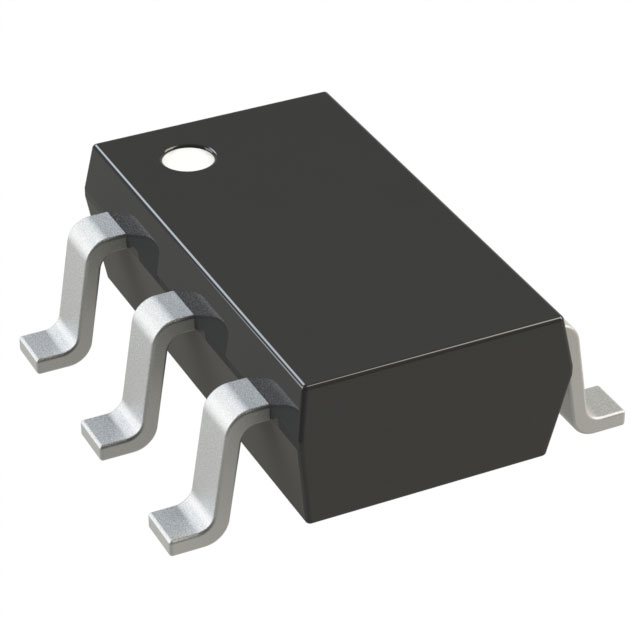
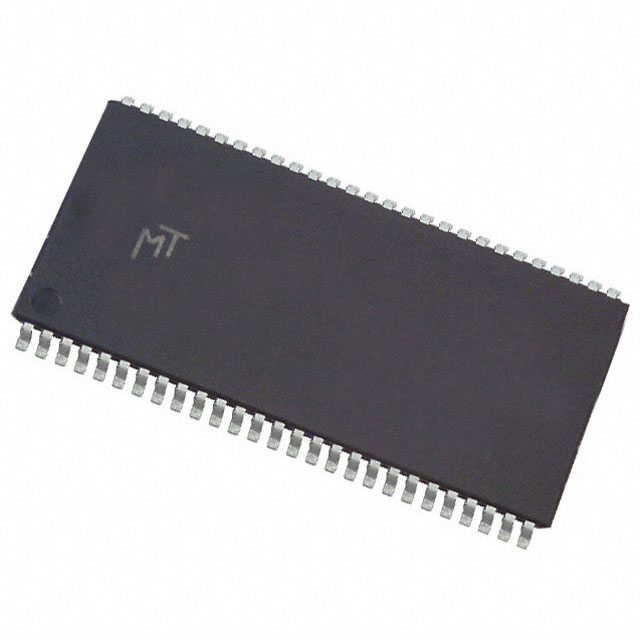
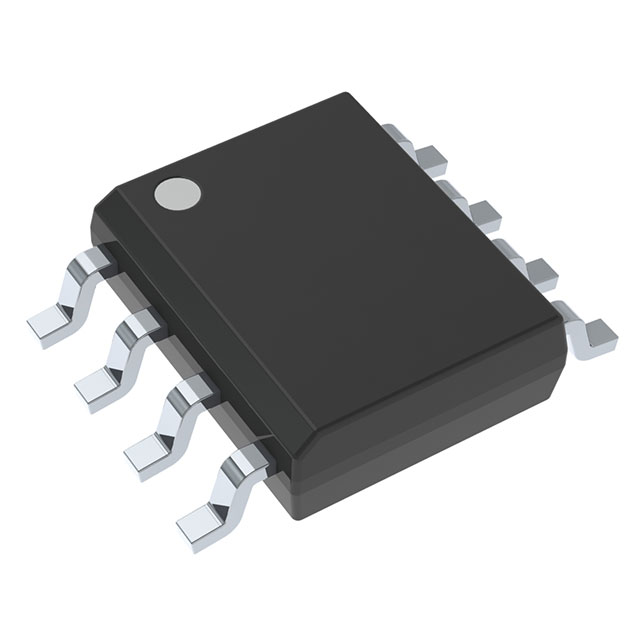

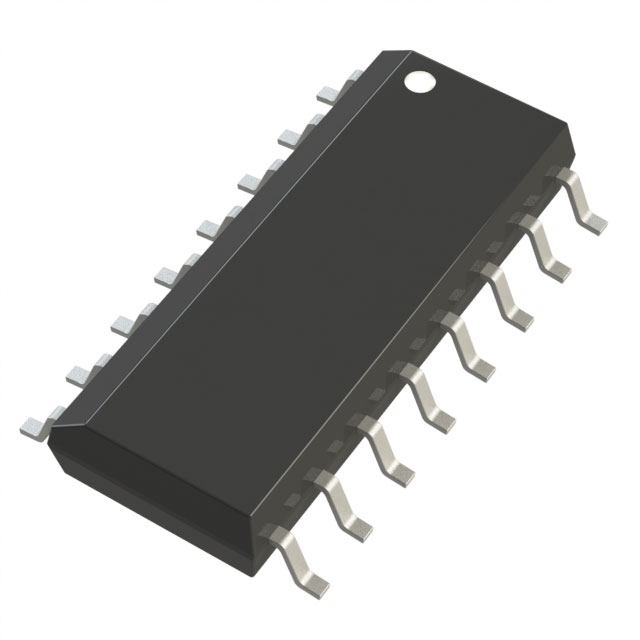
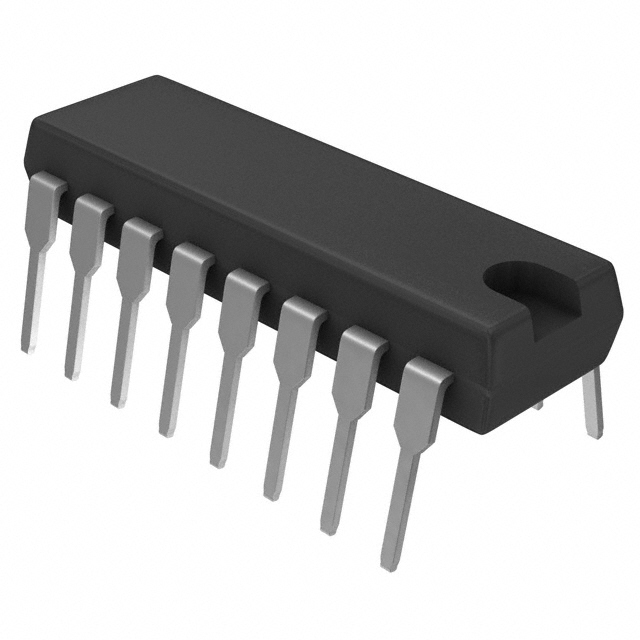
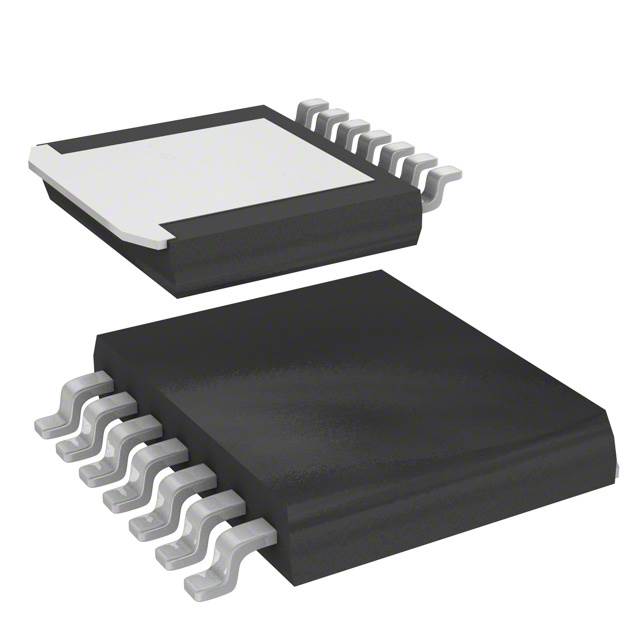






.png?x-oss-process=image/format,webp/resize,h_32)










